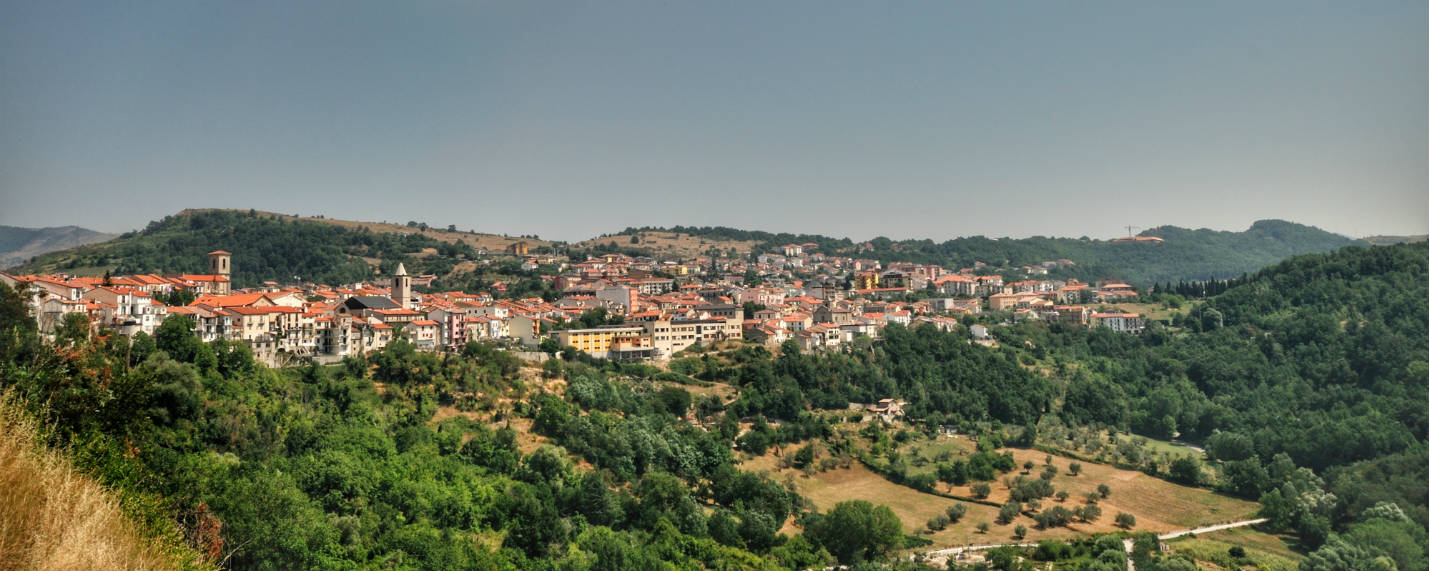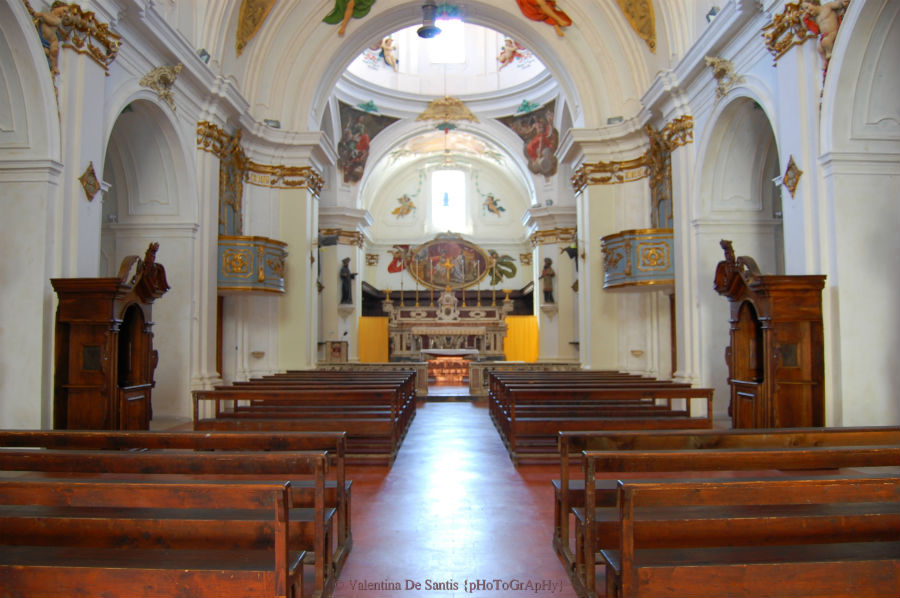Founded by the Friars Minor Conventual in 1343, the building of worship is the only one in Agnone to have been awarded the title of ‘national monument’ by the Royal Superintendency of Medieval and Modern Art of the Abruzzi in 1926. The plan of the church in question is in the shape of a Latin cross with one nave; the main façade is made of bolognini and is enhanced by the beautiful Gothic portal characterised by the perspective play of twisted columns ending in crochet capitals and surmounted by a majestic rose window at the sides of which two lions stand out, positioned under two false columns; the drum dome and the bell tower, erected around mid-17th century, also stand out elegantly.
Inside the church, starting from the left in a clockwise direction, we can admire the 11 altars in the church, namely: the altar of the Assumption or also the ‘table of the Assumption’, an important artistic testimony attributed (but the attribution is not certain) to the school of Beato Angelico and dating back to the early 16th century. In the canvas, we observe the dismayed apostles around a radiant, uncovered and empty tomb (the expression on the apostles’ faces, the use of chromatic tones and the theme of the empty sepulchre are indeed very reminiscent of the art of the great Renaissance master) on which the image of the Madonna stands out.
It is followed by the Altar of the Annunciation, which once contained relics; the Altar of St Joseph, covered by a canvas depicting St Bartholomew; the Altar of St Philomena; the Altar of St Anthony Abbot bearing a fairly well-made statue by an unknown author and made in 1793 with offerings collected from the millers of the monks, as attested by an engraving near this altar; the Altar of St Anthony Abbot with a statue of St Anthony. Antonio Abate with a fairly well-made statue by an unknown author and made in 1793 with offerings collected from the millers of the monks’ mill, as attested by an engraving near this altar; the High Altar in polychrome marble, surmounted by a beautiful wooden choir.
The Altar of the Immaculate Conception, whose statue of the Virgin Mary is the work of the Neapolitan sculptor Gian Giacomo Colombo, comes first from the bottom of the right wall; next, the Altar of St. Michael; the Altar of the Crucifix; the extremely rich Reliquary Altar of St. Crescentus, another extraordinary example of the level reached by Agnonese master cabinet-makers in the first half of the 18th century.
Finally, the altar dedicated to St Venera. The frescoes in the church are for the most part the work of Molise painter Paolo Gamba, a pupil of the famous Baroque artist Francesco Solimena; the one we can admire on the central vault of the church representing ‘The Expulsion of the Rebel Angels’ is remarkable.
(main image of the Church by Valentina De Santis)



